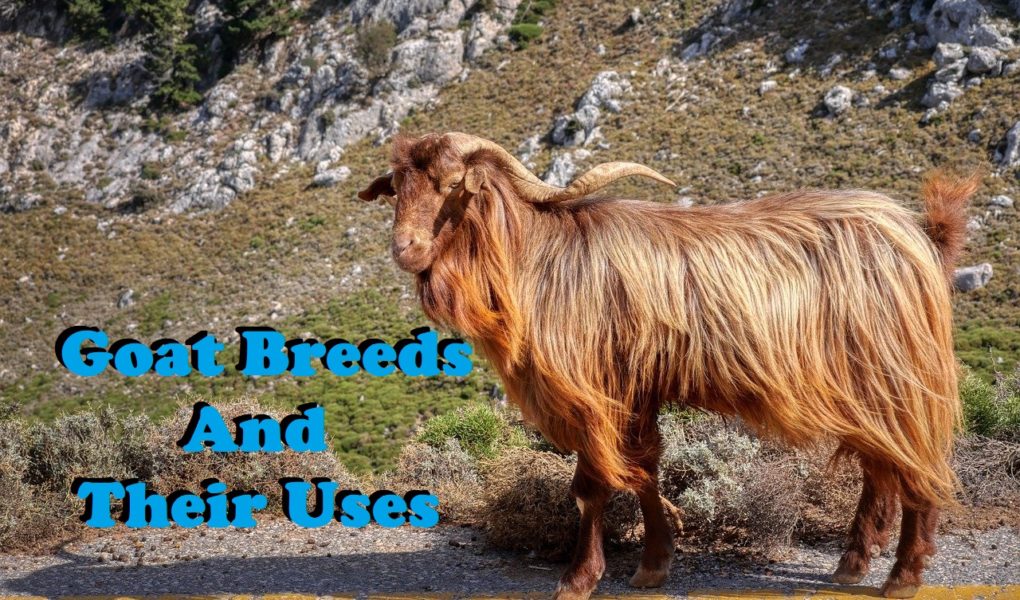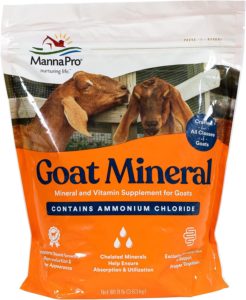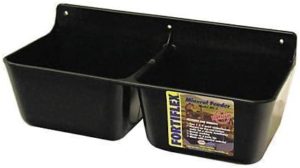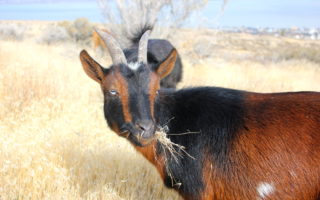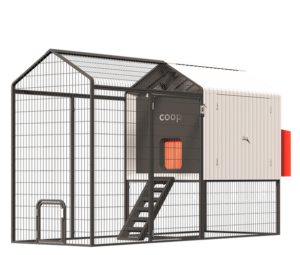What’s the difference between dairy vs meat vs fiber goats? Dairy goats are bred to produce large amounts of milk. You can still eat them. They just have a lower meat to bone ratio. Meat goats are bred to have more meat on their bones for a higher meat to bone ratio. And then you have fiber goats that are bred to produce fiber for clothing.
This Post At A Glance
Milk Breeds
-Alpine
-Oberhasli
-Saanen
-Nubian
-Toggenburg
-LaMancha
-Nigerian Dwarf
Meat Breeds
-Kiki
-Boer
-Myotonic
-Spanish
-Savhanna
-Pygmy
Fiber Goats
-Angora
-Cashmere
*Smart Coops Finally Available (CLICK HERE)**
Milk Breeds
Alpine
Height: Bucks 35″ Does 30″
Weight: Buck 170 lbs, Does 130 lbs.
Colors: pure white through shades of fawn, gray, brown, black, red, or various shadings or combinations of these colors, cou blanc, cou clair, cou noir, pied, sundgau, chamoisee,
Milk Per Day: 1.2 gallons
This hardy breed originated from the French alps. They tolerate a wide range of temperatures. This makes them great for hot and cold environments. These popular goats come in many different colors, but the most classic is the cream with black facial markings. Special care should be taken in their fencing as they can be a bit more on the energetic and athletic side. The taste of their milk can vary depending on genetics. For the most part they are known for great tasting milk and produce a lot of it.
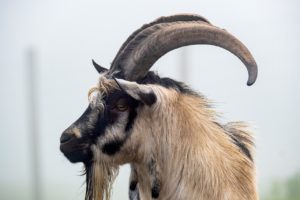
Obershasli
Height: Bucks 30″ Does 28″
Weight: Buck 150 lbs, Does 120 lbs.
Colors: chamoisee ranging from light tan to deep red, females only are allowed to be solid black
Milk Per Day: 1-1.2 gallons
A breed that originates from Switzerland. The Oberhasli has a beautiful appearance with red/black chamoisee being their primary color. Though sometimes there can be solid black. They have a gentle, calm, and friendly demeanor that makes them easy keepers. Their milk can have a goatier flavor over the others. Though some have said it’s close to cows milk.

Saanen
Height: Bucks 32″ Does 30″
Weight: Buck 165 lbs, Does 135 lbs.
Colors: pure white to light cream
Milk Per Day: 1.5-3 gallons
Another breed from Switzerland in the Saanen Valley. These goats are traditionally white and have been compared to Holstien cows for their high milk production. With quality genetics, Saanens can produce the highest yield of milk over any other breed. Of course, that also comes with size as they are among the largest of the dairy breeds. Friendly, quiet, easy to handle, cold hardy . . . make these goats excellent additions to the flock.
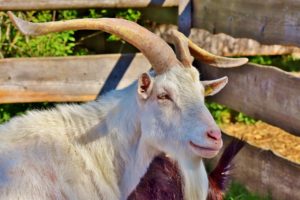
Nubian
Height: Bucks 35″ Does 30″
Weight: Buck 175 lbs, Does 135 lbs.
Colors: solid and multi-colored in shades of black, red, and tan. Moon spotted Nubians are especially pretty.
Milk Per Day: 1-2 gallons
Well known for the being the noisiest breed on this list, Nubians are also one of the most popular goats for milk. They have great tasting milk with high production yields. These guys were developed in England when British goats crossed with bucks of African and Indian origin.
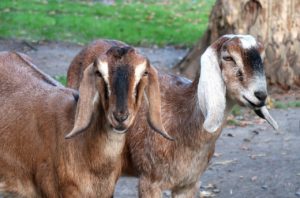
Toggenburg
Height: Bucks 28″ Does 26″
Weight: Buck 145 lbs, Does 120 lbs.
Colors: chocolate with white swiss marking
Milk Per Day: 1.5-2 gallons
Very beautiful friendly goats with their chocolate coat and cream swiss markings. They tend to appreciate cooler temp’s vs some of the other breeds. Though they have excellent milk production, the milk is known for having a goatier flavor. I’ve heard togg breeders don’t even drink their milk and will keep another breed in the flock for milk consumption.
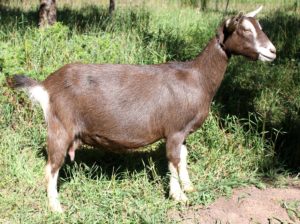
LaMancha
Height: Bucks 30″ Does 28″
Weight: Buck 130 lbs, Does 125 lbs.
Colors:gray, black, brown, reddish-brown, or white
Milk Per Day: 1 gallons
Recognized for their tiny ears that almost seem nonexistent. There great for milk and have friendly, quiet, easy-going temperament. It’s not known for sure where they originate from. It’s possible they came from Spain. There’s also been records of goats with short ears originating from Persia. They are pretty hardy in a variety a conditions. Though they may be better suited for hot weather over cold weather.
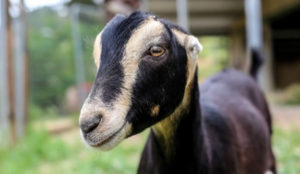
Nigerian Dwarf
Height: Bucks 35″ Does 30″
Weight: Buck 170 lbs, Does 130 lbs.
Colors: Probably the most colorful of any other breeds they come in just about every color and pattern. My favorite are the moon spotted ones.
Milk Per Day: 1/5 gallon
The smallest of the dairy breeds. Nigerian dwarfs are perfect for a small family that doesn’t need a lot of milk. They come in the largest variety of fun colors. You never know what you’re going to get when your doe gives birth. These goats’ original from West Africa. Though they come from more of a desert, they do really well in the cold too. My goats have experienced temps as low at -20°F and done well. Their size makes them more manageable and easier to house. Some Nigerians can be noisy, while others are on the quiet side. Having raised Nigerians, it seems like there’s always one goat that has something to fuss about. And if you get rid of the noisy one, someone else steps forward who was previously quiet. So, it comes down to who has the least obnoxious voice. Nigerians have the highest butterfat content of any other goat, and it increases the longer they are in milk. This makes for great tasting milk that you can make a variety of things with (cheese, ice cream, butter . . .).

*At a Glance: Below is a chart that gives a quick overall view of heights, weights, milk production, and butterfat contents of each goat.
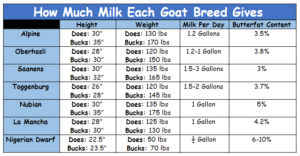
**#1 Most Popular Compact Tractor In The USA (CLICK HERE)**
Meat Breeds
Meat yield is generally about 60-65% of the hanging weight (NOT the live weight)
Boer
Height: Bucks 42″ Does 30″
Weight: Buck 340 lbs, Does 230 lbs.
Colors: Brown & White
Meat Yield Per Goat: 130-220 lbs (hanging weight)
Boer goats are popular meat goat that you will often see at your local fair for 4-H and competition. These guys are traced to Dutch farmers in South Africa. The same year they were introduced to the US, the American Boer Goat Association was formed. These goats are in high demand due to their fast growth rate and large carcasses. At a weight of 230-340 lbs. these goats are the largest of any other goat.

Kiko
Height: Bucks 35″ Does 30″
Weight: Buck 200 lbs, Does 125 lbs.
Colors: solid white or cream in color although there are some of darker colors including black
Meat Yield Per Goat: 75-130 lbs (hanging weight)
Kiko’s originate from New Zealand, their name from the Maori people is generic for “flesh for consumption”. There was a study indicating that Kiko’s may be more resistant to internal parasites and hoof rot. One of the most notable characteristics for this breed is their hardiness and ability to gain weight quickly under natural conditions without supplemental feeding. They have a fantastic ability to survive off of very little browse.
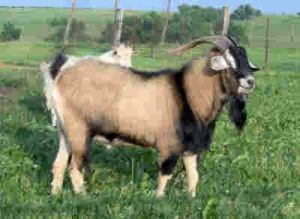
Myotonic (fainting goats)
Height: Bucks 35″ Does 30″
Weight: Buck 170 lbs, Does 130 lbs.
Colors: black & white is most common but there are other colors coming out as well
Meat Yield Per Goat: 80-110 lbs (hanging weight)
Famous for making you laugh on the internet. These goats have a recessive gene that makes their muscles lock up when the animal is abruptly startled This causes them to fall over briefly until they regain control of the muscles again. They are one of the few goats that are indigenous to the US, Tennessee in fact. Smaller than the other meat goats, they range from 60-170 lbs. Some are bred smaller to be sold as pets.

Spanish
Height: Bucks 20″ Does 20″
Weight: Buck 250 lbs, Does 150 lbs.
Colors: These goats come in a variety or patterns, shades, and colors
Meat Yield Per Goat: 90-160 lbs (hanging weight)
Also known as brush goats, these guys originated from Spain. Breeders in Texas helped improve the breed. At one time Spanish goats used to be the primary goat for meat in the US. The introduction of the boer goat made them much less desired. They tolerate difficult conditions and do well on native plants. They can be a bit flighty compared to other breeds. Being a little smaller in size means they require less food.
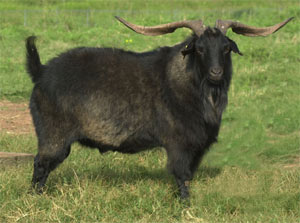
Pygmy
Height: Bucks 23″ Does 22″
Weight: Buck 90 lbs, Does 75 lbs.
Colors: basic colors are basic colors are black, dark brown/mahogany, and medium brown, solid colors are rare
Meat Yield Per Goat: 45-60 lbs (hanging weight)
Just like Nigerians are the smallest of the dairy breeds, pygmies are the smallest of the meat breeds. The also originate from Africa. Because of their small size, they are more popular as pets verses meat consumption.
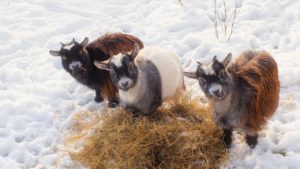
Those are the main breeds you’ll find. There are some less common breeds like the Texmaster, Savanna, Rangeland, Black Bengal, and Kalahari Reds. You’ll often find a variety of mixed breeds as people strive to find the best of both worlds.
Fiber Breeds (mohair & cashmere)
Angora
Height: Bucks 28″ Does 36″
Weight: Buck 200 lbs, Does 110 lbs.
Colors: primarily white, though they can come in other colors including brown, red, fawn, grey, and black
Fiber Yield Per Goat Per Year: 10-20 lbs
Angora fiber is known as mohair. It’s strong, durable, smooth and shiny. Goats are shorn 2 per year and can produce 10-20 lbs or “mohair”. Their origins aren’t 100% known but it appears to be Asia Minor. They are highly susceptible to parasites.
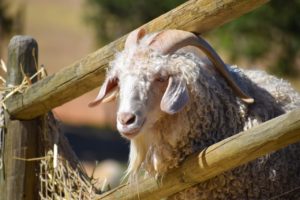
Cashmere Goats
This is not a specific breed of goat. It’s any goat breed that produces large amounts of undercoat. The downy undercoat of these goats is known to be light, warm, and very soft. Selective breeding can produce goats that are extra good at producing thick undercoats during the winter.

What about the goat in the featured image?
I don’t know for sure. From what I can find it’s a goat that runs wild on the Crete islands of Greece. Unique and beautiful looking animals.
……………………………………………………………………………………………………………………………………………………………………………..
Recommended Products (clickable)
Related Posts:
How Much Milk Should My Goat Be Giving
Photo Credits:
Toggenburg & Nigerian Dwarf Picture by Alisha Falcone of Falcone Family Farms
LaMancha Picture by Hobby Farms
Kiko, Myotonic, Spanish & Savanna pics from Goat Extention
All other photos from Pixabay (alpine, oberhasli, saanen, nubian, boer, pygmy, angora, cashmere, crete goat)
Sources:
Meat Goats – The American Goat Federation
All About Fiber Goats, From Breeds To Fiber Types – Hobby Farms
Angora Goat Animal Facts | Capra aegagrus hircus – A-Z Animals (a-z-animals.com)

